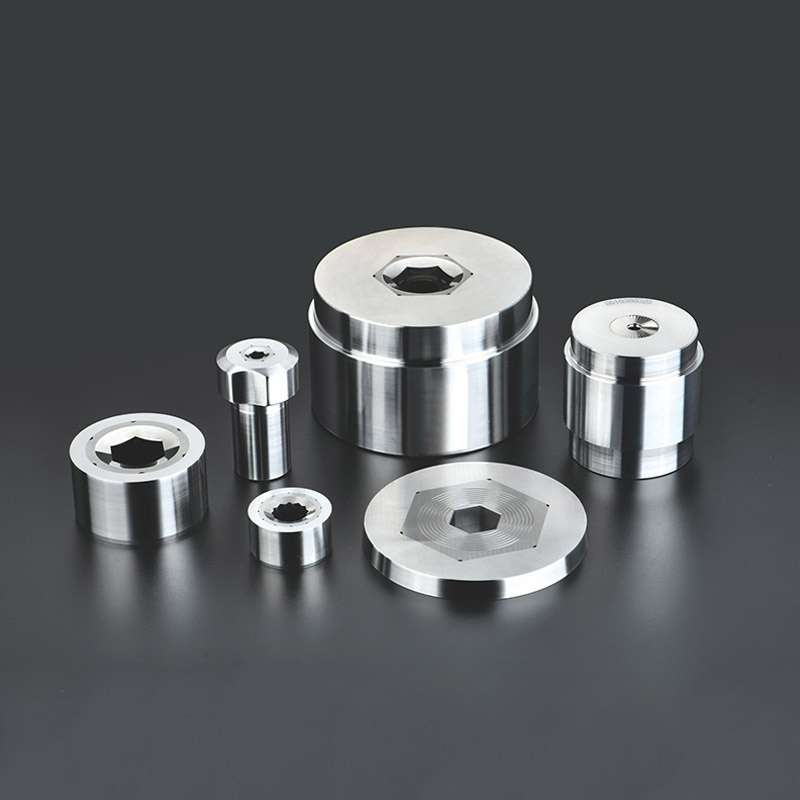Cold Forging Die: Technical Overview, Applications, and Maintenance
What is a Cold Forging Die?
A Cold Forging Die is a precision tool used in metal forming processes where material is shaped at room temperature (typically below 30% of the material's melting point) under extreme pressure (ranging from 600 MPa to 2,500 MPa). These dies are engineered to withstand cyclic loading conditions with fatigue life exceeding 100,000 cycles for premium-grade tool steels. The dies maintain dimensional tolerances within ±0.025 mm and surface finishes better than Ra 0.4 μm for critical forming surfaces.
Key characteristics of Cold Forging Dies include:
Material Composition: Typically made from high-alloy tool steels like AISI D2 (1.5% C, 12% Cr), AISI H13 (0.4% C, 5% Cr), or powder metallurgy steels with hardness values of 58-64 HRC
Thermal Stability: Maintains structural integrity at working temperatures up to 250°C without significant dimensional change
Wear Resistance: Surface treatments like TiN coating (3-5 μm thickness) can increase die life by 200-300%
Impact Toughness: Minimum 15 J/cm² Charpy V-notch values to prevent brittle fracture

Application Scenarios
Cold forging dies serve critical functions across multiple industries:
Automotive Components
Production of high-strength fasteners with tensile strengths exceeding 1,000 MPa, including wheel bolts, engine valves, and transmission gears. The process achieves material utilization rates of 95-98% compared to 60-70% in machining.
Aerospace Fasteners
Manufacturing of titanium alloy (Grade 5 Ti-6Al-4V) and high-nickel content components requiring fatigue life over 10⁷ cycles at stress ratios (R) of 0.1.
Electrical Connectors
Precision forming of copper alloys (C11000, C17200) with conductivity requirements of ≥90% IACS while maintaining springback compensation accuracy within ±0.05 mm.
Medical Implants
Production of bone screws and dental implants from 316LVM stainless steel with surface roughness below Ra 0.2 μm to prevent bacterial adhesion.
Maintenance Procedures
Preventive Maintenance Schedule
Daily: Visual inspection for cracks using 10x magnification, cleaning with non-chlorinated solvents
Weekly: Dimensional verification using CMM (Coordinate Measuring Machine) with 2 μm repeatability
Monthly: Hardness testing (Rockwell C scale) with maximum allowable variation of ±1 HRC
Quarterly: Surface regeneration via electrochemical polishing removing 5-10 μm of surface material
Lubrication Protocol
Application of molybdenum disulfide (MoS₂) based lubricants with particle sizes below 5 μm at concentrations of 15-20% by weight. Lubricant film thickness should maintain 10-15 μm during operation.
Storage Conditions
Dies must be stored in 40-50% relative humidity environments with temperature stability of 20±2°C. VCI (Vapor Corrosion Inhibitor) paper wrapping provides 12-18 months of protection against oxidation.
Failure Analysis
Common failure modes and their diagnostic parameters:
Thermal Fatigue: Check for heat checking patterns with crack spacing 0.1-0.3 mm
Abrasive Wear: Measure surface roughness increase beyond Ra 0.8 μm
Plastic Deformation: Verify dimensional changes exceeding 0.1% of nominal size











